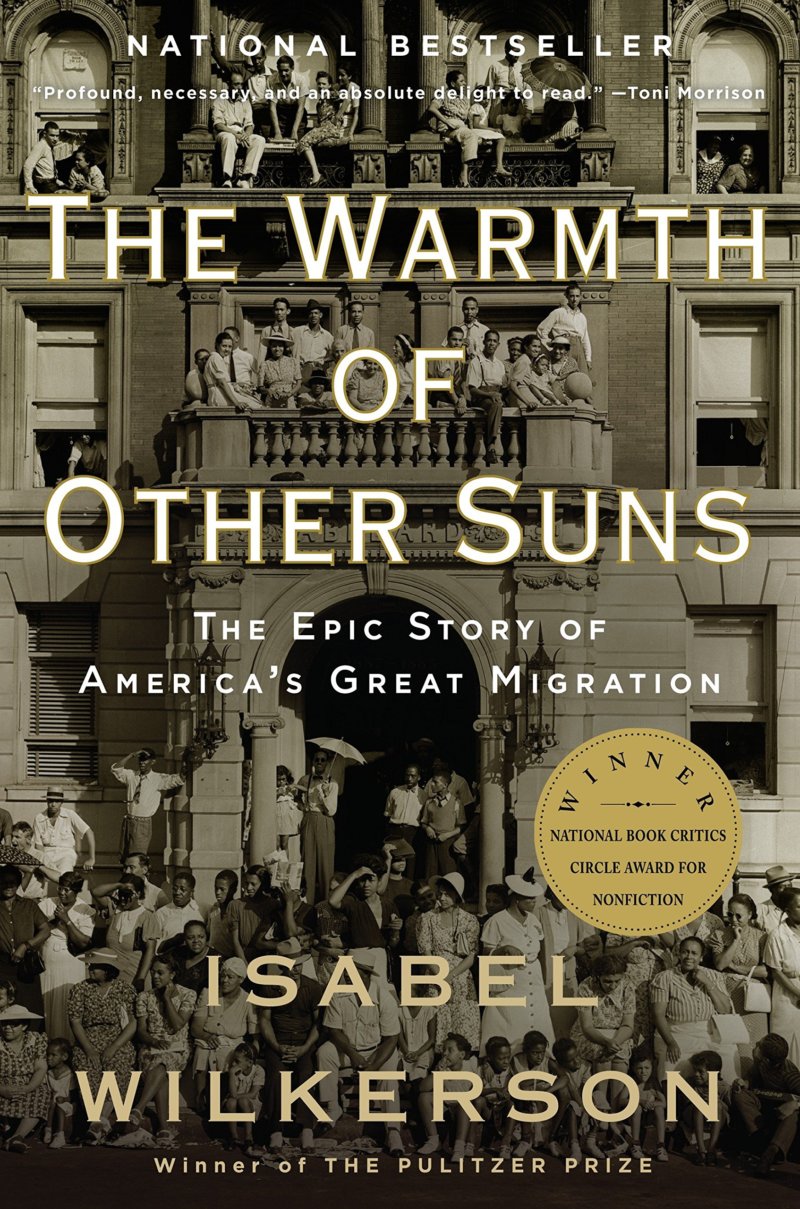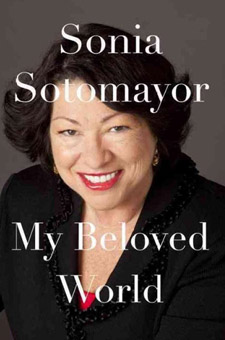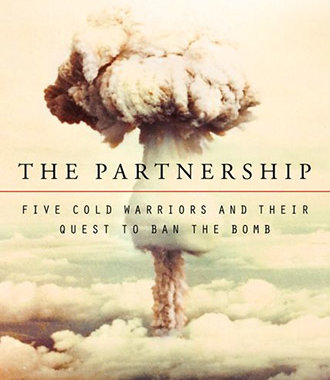They made the crossing at the border city of Washington, D.C., where they took their pictures to verify they were free from the “man-made pestilence of the Southern caste system.” On the railroad lines delivering them to their destinations—Chicago, New York, Los Angeles, Philadelphia, Detroit, or Gary, Indiana—“the migrants had to draw upon their inner reserves, transcend the limits of caste and geography and the station to which they had been assigned.” They were participants in what historians have called the Great Migration from the South to the North and West that began during World War I and lasted until the 1970s. A vast and leaderless movement, it was, according to Isabel Wilkerson, the author of the magisterial book, The Warmth of Other Suns: The Epic Story of America’s Great Migration, “the first big step the nation’s servant class ever took without asking.”
Why did they leave? What were they looking for? What would have happened if they had stayed in the South where Jim Crow laws were enforced through violence? Based solely on race and “the language of white supremacy” after the defeat of Reconstruction, the laws of segregation permeated “every aspect of black people’s lives.” They traveled in segregated taxicabs, streetcars, buses, and trains. They ate at segregated diners and mailed their letters at segregated post offices. They entertained themselves at segregated amusement parks and movie theaters, and their children played at segregated playgrounds. They were taken to the hospital in segregated ambulances and recovered in segregated rooms. And, most notably, they were educated at segregated schools and colleges. At every turn, Black people felt the treacherous conditions under which they lived; the pettiest infraction could result in death, whether by lynching or beating or lashing or arson or the barrel of a gun. Humiliations abounded. To be free was something that might happen in another life. But for the participants of the Great Migration, “It was like getting unstuck from a magnet,” a man said when he arrived in the North.
It is fairly well known that Southern Blacks migrated from the South to the North in the first half of the twentieth century. What is less well known or acknowledged is how much it resembled immigrations from other countries. According to Wilkerson, “The Great Migration was an unrecognized immigration within this country,” and it “had more in common with the vast movements of refugees from famine, war, and genocide in other parts of the world where oppressed people…go great distances, journey across rivers, deserts, and oceans or as far as it takes to reach safety with the hope that life will be better wherever they land.” In other words, Black Southerners had to leave in order “to achieve the citizenship they deserved by their ancestry and labors alone,” and thus they crossed over into the “New World” where they had the opportunity to be free.
Wilkerson is the daughter of such immigrants, but, growing up, she did not know how much her life had been shaped by her parents’ participation in the Great Migration. She writes that they “bore the subtle hallmarks of the immigrant psyche except they were Americans who had taken part in an internal migration whose reaches and nuances are still little understood.” Wanting to understand this migratory flow of millions of people from the South to the North—millions that included her parents—she spent several years researching the Great Migration and ended up writing The Warmth of Other Suns.
What was the Great Migration, and when precisely did it occur? Where did it occur? Who participated in it? To answer these questions, she visited the South Side of Chicago; Manhattan; Brooklyn; Los Angeles; Oakland, California; and Milwaukee, Wisconsin, to find people who had migrated from the South to the North and to the West. She interviewed more than twelve hundred people about their experiences; conducted follow-up interviews with thirty-six former migrants; and settled on three people whose biographies she writes about in order “to re-create the broad sweep of the movement.” In interlocking chapters, Wilkerson captures their journeys—three Southerners “who had dared to make the crossing”—and in the process, gives us, the readers, an important lesson in a historically profound “demographic phenomenon.”
Three biographies: Ida Mae Brandon Gladney, who left in the 1930s for Milwaukee and settled in Chicago; George Swanson Starling, who left in the 1940s for New York and settled in Harlem; and Robert Joseph Pershing Foster, who left in the 1950s for Oakland and settled in Los Angeles. Ida Mae, George, and Robert, unrelated and unknown to each other, were pioneers who chose to leave and forge a path for those who followed them. They were among the aggrieved, ambitious, and determined millions who wanted to make a better life for themselves. In a compelling narrative style, Wilkerson focuses on their journeys to the North and to the West, and, at the same time, situates their individual stories in the historical context of the larger struggle of the millions who also left. Why did they leave? Wilkerson states: “What binds these stories together was the back-against-the-wall, reluctant yet hopeful search for something better, any place but where they were. They did what human beings looking for freedom, throughout history, have often done.
“They left.”
In the earliest phase of the Great Migration, during World War I, labor scouts recruited Southern Blacks to fill vacant jobs in the steel mills, packing plants, and railroads in the industrial north: “During the decade of the First World War,” some 550,000 Blacks left the South, “more than all the colored people who had left in the five decades after the Emancipation Proclamation, which promised the freedoms they were now forced to pursue on their own.” In the decades that followed, “a good portion of all black Americans alive picked up and left the tobacco farms of Virginia, the rice plantations of South Carolina, cotton fields of east Texas and Mississippi, and the villages and backwoods of the remaining southern states—Alabama, Arkansas, Florida, Georgia, Kentucky, Louisiana, North Carolina, and Tennessee.” Although the Great Migration was misunderstood in its earliest analyses by historians as a temporary consequence of the war, facts support the conclusion that the migration lasted until around 1970: 903,000 people left in the 1920s; 480,000 left in the 1930s; nearly 1.6 million left in the 1940s; 1.4 million left in the 1950s; and one million left in the 1960s. Even historians today suggest that the total number of migrants that left the South between 1915 and 1970 is underestimated.
According to Wilkerson, the Great Migration changed the dynamic between the North and the South in ways no one could have imagined. That so many Black Southerners decided to leave forced “the South to search its soul and finally to lay aside a feudal caste system.” Because it was so vast and encompassed so many lives, it “helped push the country toward the civil rights revolution of the 1960s.” The migrants would never forget the details of their journeys, or the emotions that overtook them when they boarded the Jim Crow car. Ida Mae, George, and Robert remembered why they chose their destination, what the exact date was, the train they took, with whom they went to stay. As one migrant said when he was asked how it felt to be in the North, he answered, “Wish all the colored folks would come up here where you ain’t afraid to breathe.”
How did Ida Mae and George travel to the North and Robert to the West? Resettlement occurred along the most direct route from their place of origin to their destination. For example, the three main tributaries were through the coastal states of Florida, Georgia, the Carolinas, and Virginia up the eastern seaboard to Washington, D.C., Philadelphia, New York, and Boston; from the southern states of Mississippi, Alabama, Tennessee, and Arkansas up the central spine of the country that paralleled the Father of Waters to Cleveland, Detroit, Chicago, Milwaukee, and Pittsburgh; and finally, from Louisiana and Texas along routes across Texas, New Mexico, and Arizona to the entire West Coast. The migrants did not leave blindly. Some, like George, had worked in Northern cities, or, like Robert, had traveled in the North and had lived outside the country when he was a physician in the Army.
Had it not been for the rail and bus lines that ran along these tributaries, Ida Mae and her husband George would not have made it out of the South. Ida Mae left Chickasaw County, Mississippi, in late autumn 1937, from Okolona, Mississippi, on a feeder train in order to get to the Illinois Central Railroad, “the legendary rail system that…carried upward of a million colored people from the Deep South up the country’s central artery, across the Mason-Dixon Line, and into a new world called the Midwest.” Along with the Atlantic Coast line and Seaboard Air Line Railroads, The Illinois Central became known as the “Overground Railroad for slavery’s grandchildren,” and it followed the same route as the Underground Railroad had before it. Ida Mae and her family gained their freedom as Northerners when they “crossed the Mason-Dixon Line, at the Ohio River, the border between Kentucky and Illinois, between the provincial South and the modern North, between servitude and freedom.” They were seated in the Jim Crow car and, because the white dining car was closed to them, had packed their own food—fried chicken and boiled eggs—that would have to last until they arrived at their destination.
They lived in Milwaukee with Ida Mae’s sister, but they could not find work there. They moved to Chicago, where George found a stable job at the Campbell Soup plant, and Ida Mae found lifelong work as an aide at the Walther Memorial Hospital on the west side of Chicago. They lived all over the South Side of Chicago, and finally, in 1967, after thirty years in Chicago, they were able to afford a place of their own, “a beige brick three-flat in a long contested but…newly opened-up neighborhood called South Shore on the Southern tip of the black belt.” After Blacks started moving into white neighborhoods, it did not take long for the area to turn all Black.
George Starling boarded the Silver Meteor, headed for New York, at the Wildwood, Florida depot, a forty-five minute drive from his home in Eustis on April 14, 1945. Since his life was in danger, he had to move secretly, “tight and sober-faced, walking slow and deliberate so as not look like the fugitive he had unwittingly become.” He had been a sophomore at Florida Agricultural and Mechanical State College, but after his father refused to pay his tuition, he left school to work in the citrus groves, the largest employer of Black Southerners in this region of Florida. Underpaid and overworked, George organized the pickers in a unionizing drive with two of his co-workers—a dangerous action by a Black person in the South. Eventually, the pickers grew afraid of George, told the owners what he was up to, and a friend warned him that the owners and foremen were going to take him out to the cypress swamp and give him a “necktie party.” He decided to leave, telling his father that he was “not gonna change.”
The Silver Meteor left Wildwood, Florida, with George on board in the Jim Crow car; the closer it got to New York the more he started thinking about the new life ahead of him. On April 15, 1945, he arrived at Pennsylvania Station and began his life in Harlem, where, he told Wilkerson, he would be able to “live as a man and to express myself in a manly way without the fear of getting lynched at night.” After working at several unsatisfying jobs, he found a stable job on the same railroad lines that had brought him to New York: The Silver Comet that traveled from New York to Birmingham and the Silver Spur from New York to Tampa. He was both midwife and chaperone to the thousands of people migrating from the South and to the Northerners who traveled back to their roots. He eased them into “the Promised Land” and told “them whatever he knew about this new place, which bus or subway to take, how far the station was from their cousin’s apartment, to watch out for panhandlers and hustlers…and usher them and their luggage off to whatever the future held for them.”
Robert Joseph Pershing Foster (Pershing in Louisiana, Robert, or Bob, in California), left in the 1950s for California, and he vowed he would never return to Monroe, Louisiana, where he was raised. When he was a teenager in Monroe, he escaped to the Paramount Theater, bought his ticket at the “colored window,” climbed five flights of stairs, and entered another world—the world of Hollywood. Ambitious, smart, and a fighter, Robert was determined to get what he wanted and what he thought he deserved. He attended Morehouse College, where he met his future wife Alice Clement, the daughter of the President of Atlanta University; trained to be a physician at Meharry Medical College in Nashville; and finished his residency at the Homer G. Phillips Hospital, a “colored facility” in St. Louis. Robert was dissatisfied. He still lived in the South. He wanted to go to California.
On the Monday after Easter 1953, Robert left Monroe alone (his family lived with Alice’s parents in Atlanta) in a Buick Roadmaster and drove west with “nearly two thousand miles of road ahead of him, the distance that stood between him and California, between Jim Crow and freedom.” Robert knew “the code of the road among colored people making the crossing”—there were places you stopped and places you did not. He crossed West Texas and arrived in El Paso—“the unspoken border between Jim Crow South and the Free Southwest”—but he did not linger because it was too close to Jim Crow. He stayed the night in Lordsburg, New Mexico—one of the few places where Black people could sleep the night—and drove to Phoenix where he was refused a motel room four times. At the last motel, the owners, who were from Illinois, told him, “We don’t share the opinion of the people in this area. But if we take you in, the rest of the motel owners will ostracize us. We just can’t do it. I’m sorry.” Robert got back on the road, barely able to keep his eyes open, and drove the last 345 miles to San Diego. He told Wilkerson that he had questioned himself at the time: Was it all worth it?
Indeed, for Robert, it was worth the trouble. He became a successful and much admired surgeon in Los Angeles, where he and his wife Alice built an envious life together—renowned and wealthy.
Ida Mae, George, and Robert exemplify what recent research has written about the Great Migration: “The people of the Great Migration who ultimately made lives for themselves in the North and West were among the most determined of those in the South, among the most resilient of those who left, and among the most resourceful of blacks in the North, not unlike immigrant groups from other parts of the world who made a way for themselves in the big cities of the North and West.” They were better educated, more likely to be married and stay married, more likely to raise their children in two-parent households, more likely to be employed, and less likely to be on welfare than were their northern counterparts. Ida Mae, George, and Robert stayed married and raised their children with their spouses. Ida Mae and George worked at jobs that underpaid them, but they became blue collar, churchgoing, tax paying homeowners. Robert, the most successful, was also the most highly educated and perhaps the most driven to live as he felt he deserved to live. And he never forgave the South for Jim Crow.
Wilkerson succeeds in The Warmth of Other Suns precisely because her premise is clear, and she supports it with the most recent historical and sociological research in an accessible narrative: Blacks fled the South by the millions because they could not bear to live under the narrow confines of the Jim Crow laws that kept them in their place. She states: “In the end, it could be said that the common denominator for leaving was the desire to be free, like the Declaration of Independence said, free to try out for most any job they pleased, play checkers with whomever they chose, sit where they wished on the streetcar, watch their children walk across a stage for the degree most of them didn’t have the chance to get. They left to pursue some version of happiness, whether they achieved it or not. It was a seemingly simple thing that the majority of Americans could take for granted but that the migrants and their forebears never had a right to in the world they had fled.” The same could be said for the majority of immigrants who have fled persecution and oppression in their countries of origin.
There is a certain pleasure in reading The Warmth of Other Suns. You do not have to study statistics or graphs or charts to assimilate what happened to Black Southerners during the Jim Crow years. Wilkerson captures the immediacy of the danger that surrounded them in the South and the joy they felt when they arrived in Washington, D.C., or crossed the Mason-Dixon Line, or drove beyond El Paso, Texas. She places their biographies in the historical context of the era in which they lived, and she narrates their immigration to the “New World” with honesty and empathy. Through the stories of Ida Mae, George, and Robert, you understand what it must have been like for a Black person to grow up in the South under the laws of Jim Crow.
Note: Did the Great Migration achieve the aim of those who willed it? Wilkerson asks if she herself would have even existed if her mother “had not gone north and met and married the Tuskegee Airman from Virginia, a migrant himself, who would become” her father. In The Warmth of Other Suns, she wonders what would have happened if the parents and grandparents of some famous Black men and women who have enriched our lives had not fled the South. Here are the names of some of them: The jazz greats Miles Davis, John Coltrane, Thelonius Monk; the blues singer B.B. King; the politicians Carl Stokes, Tom Bradley, Coleman Young, Harold Washington, David Dinkins; Condoleeza Rice; Oprah Winfrey; the athletes Jesse Owens, Bill Russell, Joe Louis, Jackie Robinson, Serena and Venus Williams; the writers Toni Morrison, James Baldwin, Ralph Ellison, and the poet Langston Hughes; the playwrights Lorraine Hansberry and August Wilson; the actors Bill Cosby and Denzel Washington; the singers and performers Diana Ross, Aretha Franklin, Nat King Cole, Jimi Hendrix, Michael Jackson, Prince, Whitney Houston, Mary J. Blige, Queen Latifah; the director Spike Lee; the artist Romare Beardon; and the First Lady, Michelle Obama. The bard of the Great Migration, Richard Wright, author of Native Son, was born in Natchez, Mississippi, left for Chicago in December 1927, and wrote that he was leaving the South to “respond to the warmth of other suns, and perhaps, to bloom.”



